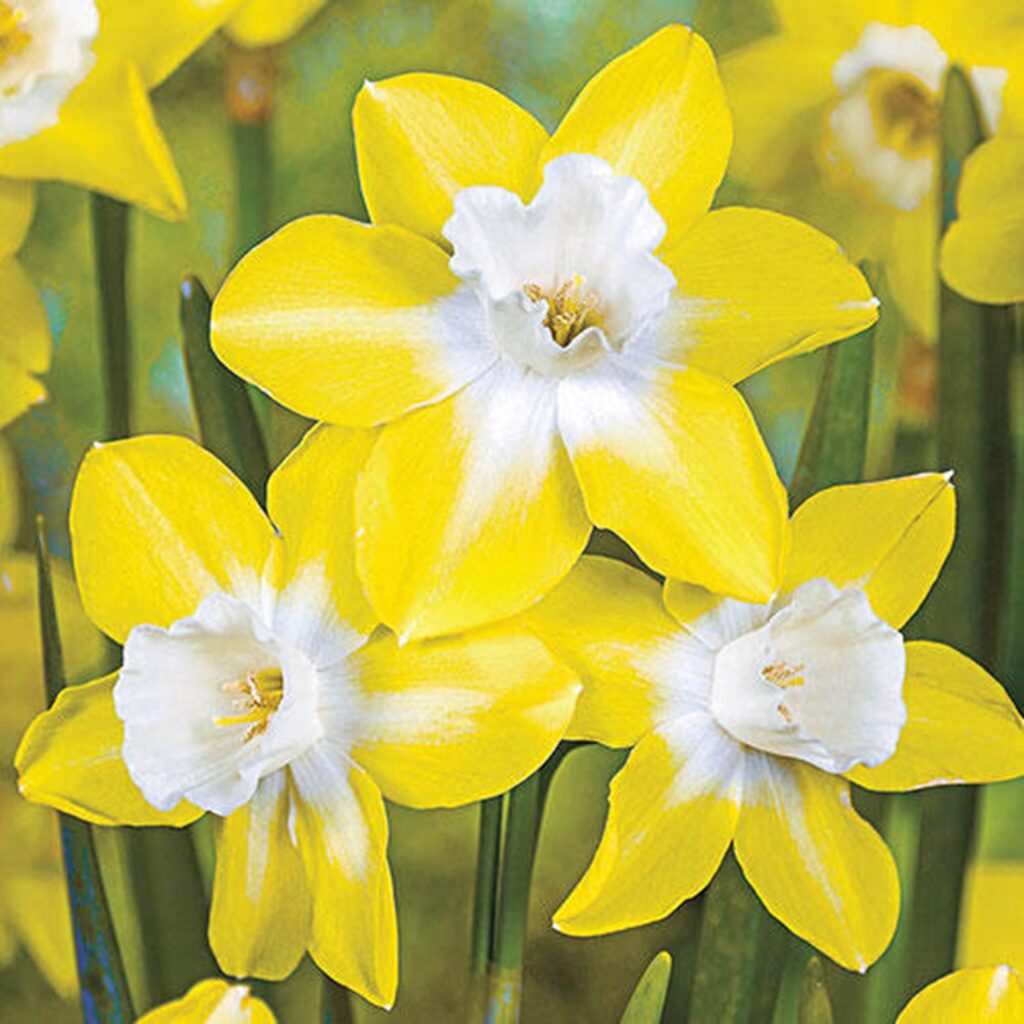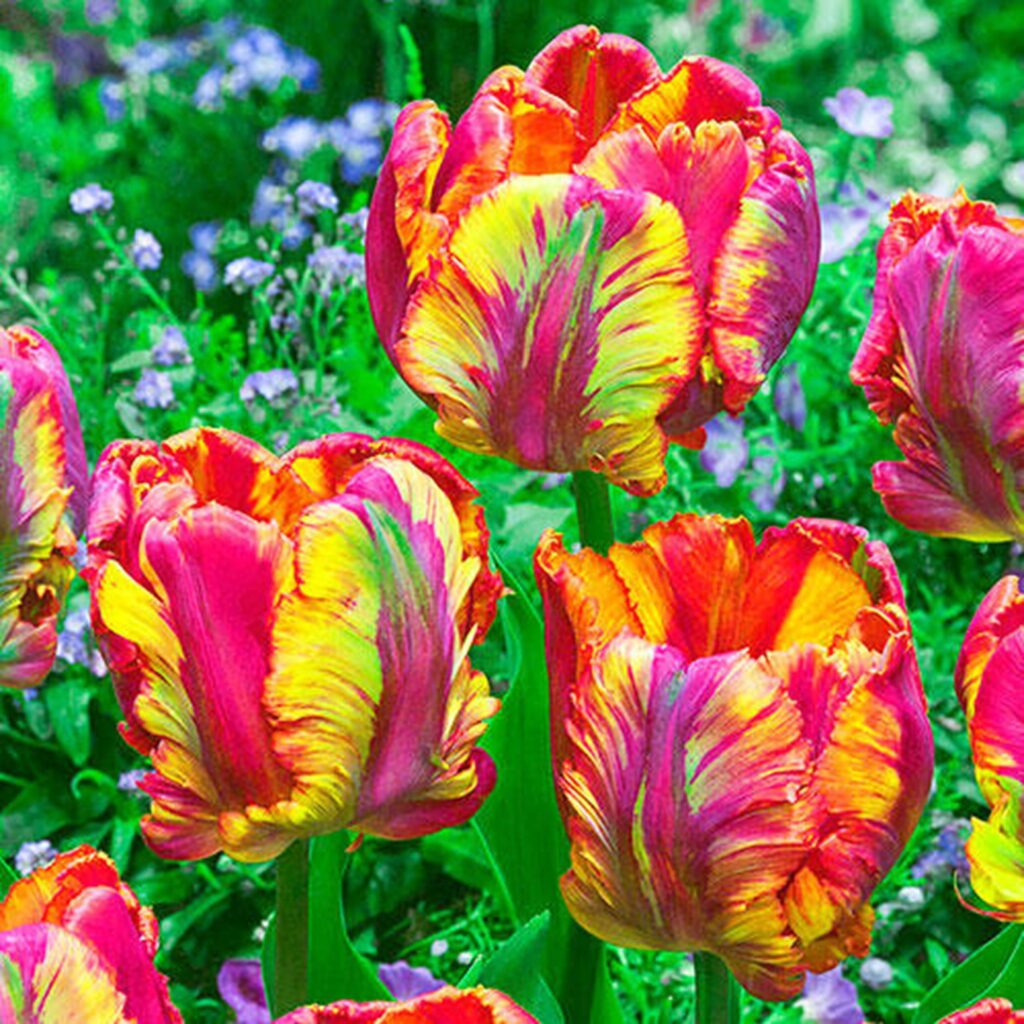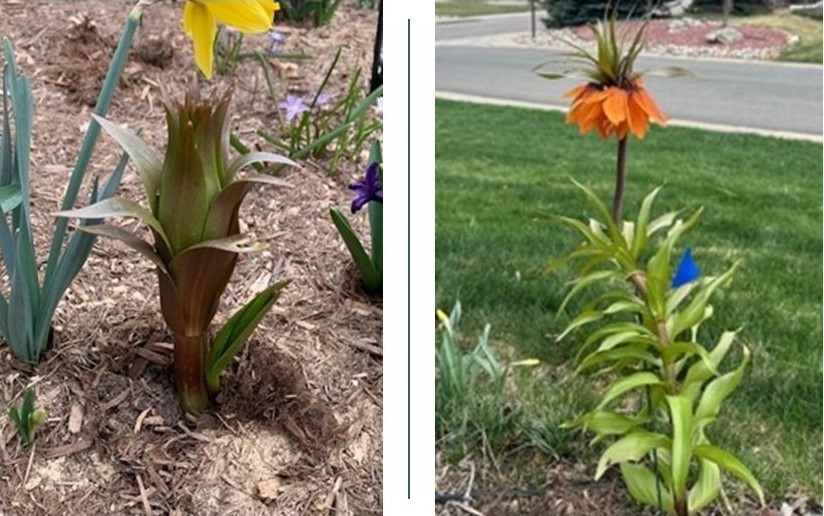Bulbs! Bulbs! Bulbs!
- 2024-09-07
- By mkirk
- Posted in Horticulture, The Garden Buzz
By Sarah Henderson, Colorado Master Gardener

I love bulbs. I’ll admit that I’m a little obsessed with them. I’ve planted over a thousand in my garden over the last few years. Not only are they easy to care for, they are easy to pop into any little empty spot in the garden. Come spring, they bloom quickly and are beautiful. Early varieties will come up through the snow too. Some people will even plant them in their lawns to enjoy while waiting for the grass to green up. A little effort spent planting in the fall always seems to pay off in the spring.
There are so many more bulbs than the classic tulips and daffodils that are plentiful everywhere. The word “bulb” is a bit of an all-encompassing term for plants that grow from corms, rhizomes, tubers and actual bulbs. There are new varieties as well as old varieties dating back to the 1200s (Hyacinth ‘English Bluebell’). There are early blooming dwarf irises that sometimes bloom as early as mid-February in my garden. There are snowdrops, guinea flowers, lilies and big showy fritillaria. There are fall planted bulbs and spring planted bulbs.

I love browsing bulb catalogs for unique specimens to grow in my garden. I found daffodils where the yellow and white colors are switched, so the center cup is white, and the outer petals are yellow (Daffodil “Pipit”). I have large, bright yellow hyacinths, (Hyacinth ‘City of Haarlem’) along with tiny grape hyacinths in every color combo I could find in the catalog. One of my favorite plants is my Crown Imperial Fritillaria which we fondly refer to as the “Alien Plant.” The more it grows and blooms, the more it looks like a plant you would see in a fantasy movie! I found a new source for heirloom bulbs at Old House Gardens, and now I want to order one of everything. I have my eye on a light blue dwarf iris (Iris ‘Katherine Hodgkins’) and a checkered flower (Fritillaria ‘Snake’s-head’).

Bulbs can be a fun way to add extra color to an otherwise difficult spot in your garden. Small bulbs and corms from crocuses, dwarf irises, and even small alliums are easy to pop into tiny spaces between tree roots or irrigation lines. Now that I have added so many bulbs to my garden, I must be careful where I dig when I plant new ones. A trick I learned is to take photos of the garden at different times of the year so I can remember where all my bulbs are when I want to tuck in a few new daffodils or crocuses.

Many plants that grow from bulbs are also deer and rabbit resistant. Managing grazing deer is a constant battle, so I am always on the hunt for flowers that they tend to avoid. Daffodils are usually safe; but sometimes, a curious deer will eat them as they are just coming up. If deer or rabbits are a problem in your yard, it may take a bit of experimenting to find which bulbs they will avoid. Muscari (grape hyacinths) are labeled as deer resistant, but they seem to be a favorite of our neighborhood deer. Most alliums (onion family) are deer resistant, and the larger varieties really put on a show (Allium ‘Gladiator’). I try to grow tulips every year, but much to my dismay, deer love tulips. I tuck them in where I think they will be safe, but the deer always seem to find them. Some varieties I dream of growing in a deer-free world are ‘Rainbow’ or ‘Apricot’ parrot tulips. Parrot tulips are named for their ruffles and coloration that resemble a parrot’s feathers.

Many species of bulbs naturalize, spread and bloom year after year. Unfortunately, some bulbs will only bloom for one or two years after planting. Check the plant info when buying them to see if they will naturalize and rebloom.
I hope this encourages you to check out this year’s bulb catalogs to add a pop of color to your garden next spring. Maybe you, too, can find your next ‘Alien Plant!’
Horticulture Resources
- Garden Buzz Archives
- CSU Extension Resources
- Colorado Master Gardener Program
- Foothills to Plains Native Plant Master Program
- Native Bee Watch Community Science Program
- The Co-Hort Blog
- PlantTalk Colorado
- Soil Testing
- Plant Select
- Emerald Ash Borer
- Japanese Beetle
- Colorado State Forest Service
- Ask an Expert


